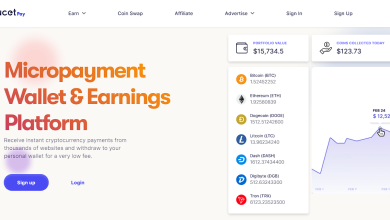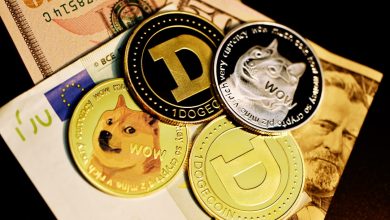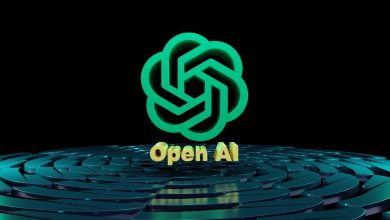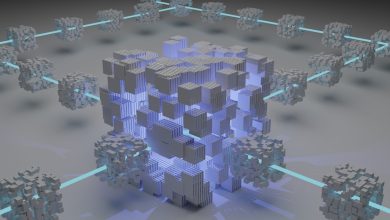DeFi: What Is Decentralized Finance and How It Works
DeFi: What Is Decentralized Finance and How It Works

DeFi: What Is Decentralized Finance and How It Works
Can traditional financial systems be revolutionized by eliminating intermediaries and increasing transparency? The emergence of DeFi, or Decentralized Finance, is attempting to do just that, leveraging blockchain technology to recreate financial systems in a decentralized manner.

DeFi encompasses a wide range of financial applications and services, from lending and borrowing to trading and investing, all operating on blockchain networks. By utilizing cryptocurrency and blockchain, DeFi aims to make financial transactions more accessible, efficient, and transparent.
Key Takeaways
- DeFi leverages blockchain technology to recreate traditional financial systems.
- It encompasses various financial applications and services.
- DeFi operates on blockchain networks, utilizing cryptocurrency.
- The goal is to make financial transactions more accessible and transparent.
- DeFi has the potential to revolutionize traditional financial systems.
What Is Decentralized Finance?
Decentralized finance, or DeFi, represents a revolutionary shift in the way we think about financial systems and transactions. It offers a decentralized alternative to traditional financial systems, providing users with greater control over their financial activities.
The Evolution from Traditional Finance to DeFi
The traditional financial system is characterized by centralized institutions, such as banks and stock exchanges, which act as intermediaries between parties. DeFi challenges this paradigm by leveraging blockchain technology and cryptocurrency to facilitate peer-to-peer transactions without the need for intermediaries.
Examples of DeFi applications include lending platforms, decentralized exchanges (DEXs), and yield farming protocols, all of which operate on blockchain networks. These applications provide users with financial freedom and the potential for higher returns on their investments.
Core Principles and Philosophy
At its core, DeFi is built on the principles of decentralization, transparency, and accessibility. It aims to create a more equitable financial system where users have greater control over their assets and transactions. The philosophy behind DeFi emphasizes the importance of financial inclusion and the potential for global accessibility.
How DeFi Differs from CeFi (Centralized Finance)
DeFi differs significantly from CeFi in several key ways. Firstly, DeFi operates on blockchain networks, which are decentralized and transparent, whereas CeFi is controlled by centralized institutions. Secondly, DeFi enables peer-to-peer lending and other financial activities without the need for intermediaries, reducing costs and increasing efficiency.
In summary, DeFi represents a significant shift towards a more decentralized, transparent, and accessible financial system. As the ecosystem continues to evolve, it is likely to have a profound impact on the way we think about finance and financial transactions.
The Technology Behind Decentralized Finance
Decentralized Finance (DeFi) relies heavily on cutting-edge technology to facilitate secure and transparent financial transactions. At its core, DeFi utilizes blockchain technology as its foundation.
Blockchain as the Foundation
Blockchain finance is revolutionizing the way financial transactions are conducted. By providing a decentralized ledger, blockchain ensures that transactions are secure, transparent, and immutable. This technology is crucial for DeFi applications, as it eliminates the need for intermediaries and enables peer-to-peer transactions.
Smart Contracts: Self-Executing Agreements
Smart contracts are self-executing agreements with the terms of the agreement directly written into code. They play a vital role in DeFi by automating various processes, such as lending and borrowing, without the need for intermediaries. Platforms like Ethereum have popularized the use of smart contracts, making them a cornerstone of DeFi protocols.
“Smart contracts are a set of promises, specified in digital form, including protocols within which the parties perform these promises.” – Nick Szabo
The Role of Ethereum and Other Blockchains
Ethereum is the most prominent blockchain for DeFi applications, hosting a wide range of DeFi protocols and cryptocurrency lending platforms. However, other blockchains, such as Binance Smart Chain and Polkadot, are also gaining traction in the DeFi space, offering alternatives for developers and users.
The combination of blockchain technology, smart contracts, and various blockchain platforms forms the backbone of DeFi. As the ecosystem continues to evolve, we can expect to see more innovative applications of these technologies.
How Decentralized Finance Works
Understanding how DeFi works requires a deep dive into its underlying infrastructure, including liquidity pools and automated market makers. DeFi systems operate through a complex architecture that facilitates various financial services.
The Architecture of DeFi Systems
The architecture of DeFi systems is multifaceted, involving blockchain technology and smart contracts. These components work together to enable secure, transparent, and efficient transactions.
Smart contracts are self-executing contracts with the terms of the agreement directly written into code. They automate processes such as lending and borrowing, making DeFi more efficient.
Liquidity Pools and Automated Market Makers
Liquidity pools are crucial in DeFi, providing the necessary liquidity for various financial activities. Automated Market Makers (AMMs) use algorithms to determine asset prices, facilitating trades without traditional intermediaries.
Tokenization of Assets
Tokenization involves converting real-world assets into digital tokens on a blockchain. This process enhances liquidity and allows for fractional ownership, making assets more accessible.
Consensus Mechanisms in DeFi
Consensus mechanisms, such as proof-of-stake (PoS), play a vital role in securing DeFi transactions. These mechanisms ensure the integrity and security of the blockchain, preventing fraudulent activities.
In conclusion, DeFi works through a sophisticated interplay of technological components, including liquidity pools, AMMs, tokenization, and consensus mechanisms. Understanding these elements is key to grasping the full potential of DeFi.
Key Components of the DeFi Ecosystem
Understanding the DeFi ecosystem requires a look into its fundamental components. The DeFi space is complex and multifaceted, relying on several critical elements to function effectively.
Decentralized Applications (dApps)
Decentralized applications, or dApps, are software applications that run on a blockchain network rather than a centralized server. These applications are a crucial part of the DeFi ecosystem, enabling users to interact with various financial services in a decentralized manner. dApps are typically open-source and allow for transparent and permissionless access to financial services.
Protocols and Standards
Protocols and standards play a vital role in the DeFi ecosystem by providing a common framework for different applications and services to interact. These protocols define how data is handled, how transactions are processed, and how different components of the ecosystem communicate with each other. Examples include lending protocols and exchange protocols that enable seamless interaction between different dApps.
Governance and DAO Structures
Governance in DeFi is often achieved through Decentralized Autonomous Organizations (DAOs), which allow stakeholders to participate in decision-making processes. DAOs operate based on smart contracts, ensuring that decisions are made in a transparent and decentralized manner. Governance tokens are used to vote on proposals, enabling the community to shape the direction of DeFi projects.
The combination of dApps, protocols, and governance structures like DAOs creates a robust and decentralized financial system. As the DeFi ecosystem continues to evolve, these components will play a crucial role in shaping its future.
Popular DeFi Applications and Use Cases
DeFi applications have gained significant traction, transforming traditional financial systems into more open and inclusive networks. The DeFi ecosystem is diverse, offering a range of financial services that are accessible to anyone with an internet connection.
Lending and Borrowing Platforms
Lending and borrowing are fundamental aspects of DeFi. Platforms like Aave and Compound allow users to lend their assets to earn interest or borrow assets by providing collateral. This process is facilitated through smart contracts, ensuring transparency and security.
Key benefits include the ability to access capital without traditional banking intermediaries and to earn interest on deposits. Lending protocols often use over-collateralization to mitigate risk, requiring borrowers to lock up more value than they borrow.
Decentralized Exchanges (DEXs)
Decentralized exchanges, such as Uniswap and SushiSwap, enable users to trade cryptocurrencies directly from their wallets. DEXs utilize Automated Market Makers (AMMs) to provide liquidity, eliminating the need for traditional order books.
| DEX | Liquidity Pool | Trading Fees |
|---|---|---|
| Uniswap | High | 0.3% |
| SushiSwap | Medium | 0.3% |
| Curve | High | 0.04% |
Yield Farming and Liquidity Mining
Yield farming involves providing liquidity to DeFi protocols in exchange for rewards, typically in the form of additional tokens. Liquidity mining is a subset of yield farming that focuses on providing liquidity to specific pools to earn rewards.
Popular yield farming platforms include Yearn.finance and Harvest.finance, which aggregate liquidity across various DeFi protocols to maximize returns.
Stablecoins and Synthetic Assets
Stablecoins, such as USDT and USDC, are cryptocurrencies pegged to the value of traditional currencies, reducing volatility. Synthetic assets, like those offered on Synthetix, allow users to gain exposure to real-world assets, such as gold or fiat currencies, on the blockchain.
Stablecoins are crucial for DeFi as they provide a stable store of value and medium of exchange, facilitating various financial activities.
Major DeFi Platforms and Protocols
Several major DeFi platforms and protocols are currently shaping the future of financial services. These platforms are crucial for the DeFi ecosystem, offering a range of financial services that are accessible to anyone with an internet connection.
Lending Protocols: Aave, Compound, and MakerDAO
Lending protocols are a cornerstone of the DeFi ecosystem, enabling users to lend and borrow cryptocurrencies in a decentralized manner. Aave, Compound, and MakerDAO are among the most prominent lending protocols. Aave is known for its liquidity pools and flash loans, while Compound allows users to earn interest on their deposited assets. MakerDAO, on the other hand, is famous for its stablecoin, DAI, which is pegged to the US dollar.

Exchange Protocols: Uniswap, SushiSwap, and Curve
Exchange protocols facilitate the trading of cryptocurrencies in a decentralized and trustless environment. Uniswap is one of the pioneers in this space, utilizing an automated market maker (AMM) model. SushiSwap emerged as a fork of Uniswap, offering additional features such as yield farming. Curve, meanwhile, specializes in stablecoin trading with low slippage.
Aggregators and Yield Optimizers
As the DeFi space has grown, so has the need for aggregators and yield optimizers. These platforms help users maximize their returns by automatically switching between different lending protocols and investment opportunities. They simplify the process of managing multiple DeFi positions and optimizing yields.
In conclusion, major DeFi platforms and protocols are pivotal in driving the growth and adoption of decentralized finance. By understanding these platforms, users can better navigate the DeFi landscape and capitalize on the opportunities available.
Benefits of Decentralized Finance
The DeFi ecosystem provides a wide range of advantages, including financial inclusion and transparency, that are transforming the way we interact with financial services. These benefits are not only enhancing the user experience but also contributing to the growth and adoption of DeFi.
Financial Inclusion and Global Accessibility
DeFi promotes financial inclusion by providing access to financial services for anyone with an internet connection, regardless of their geographical location or economic status. This global accessibility is a significant step towards creating a more equitable financial system.
Transparency and Immutability
Transactions on DeFi platforms are recorded on a public blockchain, ensuring transparency and immutability. This transparency helps in building trust among users and reduces the risk of fraud.
Elimination of Intermediaries
By allowing peer-to-peer transactions, DeFi eliminates the need for intermediaries, thereby reducing transaction costs and increasing efficiency. This elimination of intermediaries is a key factor in the cost-effectiveness of DeFi services.
Potential for Higher Returns
DeFi offers the potential for higher returns through various mechanisms such as lending, borrowing, and yield farming. These opportunities attract investors looking for alternative investment options beyond traditional finance.
In conclusion, the benefits of DeFi, including financial inclusion, transparency, and the potential for higher returns, are driving its rapid growth. As the DeFi ecosystem continues to evolve, it is likely to play an increasingly important role in shaping the future of finance.
Risks and Challenges in DeFi
DeFi has opened up new financial opportunities, but it also poses considerable risks, including market volatility and user experience limitations. As the DeFi ecosystem continues to grow, it’s essential to understand these challenges to navigate this space effectively.
Smart Contract Vulnerabilities and Exploits
One of the significant risks in DeFi is the vulnerability of smart contracts. These self-executing contracts can have bugs or security flaws that can be exploited by malicious actors, leading to financial losses. Smart contract audits and robust security measures are crucial to mitigate these risks.
Market Volatility and Impermanent Loss
DeFi is not immune to market volatility. The value of assets can fluctuate rapidly, affecting the overall value of investments. Additionally, liquidity providers on decentralized exchanges may face impermanent loss due to price changes in the assets they provide liquidity for.

Scams and Fraudulent Projects
The DeFi space has seen its share of scams and fraudulent projects. Investors must be cautious and conduct thorough research before investing in any DeFi project. Due diligence is key to avoiding potential scams.
User Experience Limitations
Despite the advancements in DeFi, user experience remains a significant challenge. Complex interfaces and the need for technical knowledge can deter mainstream adoption. Improving user experience is vital for the widespread acceptance of DeFi applications.
In conclusion, while DeFi offers numerous benefits, it is crucial to be aware of the associated risks and challenges. By understanding these risks, users and investors can make informed decisions and navigate the DeFi landscape more effectively.
Regulatory Landscape for DeFi
The DeFi sector is navigating a complex and evolving regulatory landscape worldwide. As decentralized finance continues to mature, regulatory bodies are faced with the challenge of creating frameworks that foster innovation while protecting consumers.
Current Regulatory Approaches Worldwide
Different countries are adopting varied regulatory approaches to DeFi. Some nations are embracing DeFi with open regulatory environments, while others are more cautious, imposing stricter regulations. For instance, the United States has taken a multifaceted approach, with various agencies overseeing different aspects of DeFi.
Compliance Challenges
One of the significant challenges in DeFi regulation is compliance. Decentralized platforms often operate without a central authority, making it difficult to enforce regulatory requirements. Moreover, the pseudonymous nature of many DeFi participants complicates Anti-Money Laundering (AML) and Know Your Customer (KYC) efforts.
The Balance Between Innovation and Consumer Protection
Regulators face the delicate task of balancing the need to foster innovation in DeFi with the necessity of protecting consumers. Overly stringent regulations could stifle growth, while inadequate oversight could expose users to significant risks. Achieving this balance is crucial for the sustainable development of the DeFi ecosystem.
Getting Started with DeFi: A Beginner’s Guide
For those new to DeFi, getting started can seem daunting, but breaking it down into manageable steps can simplify the process. The first step involves setting up the necessary tools and acquiring a basic understanding of how DeFi works.
Setting Up a Non-Custodial Wallet
A non-custodial wallet is essential for interacting with DeFi platforms. Unlike custodial wallets, non-custodial wallets give you full control over your private keys, thereby enhancing security. Popular options include MetaMask and Trust Wallet. To set up a non-custodial wallet, you typically need to:
- Download the wallet application or browser extension.
- Create a new wallet and securely store your seed phrase.
- Fund your wallet by transferring cryptocurrency into it.
Acquiring and Managing Cryptocurrency
To participate in DeFi, you’ll need to acquire cryptocurrency. This can be done through various channels such as:
- Centralized exchanges (CEXs) like Coinbase or Binance.
- Decentralized exchanges (DEXs) like Uniswap.
- Peer-to-peer (P2P) trading platforms.
Once you’ve acquired cryptocurrency, it’s crucial to manage it effectively. This includes understanding how to transfer assets between different wallets and exchanges, as well as keeping track of your holdings.
Interacting with DeFi Platforms
DeFi platforms offer a range of financial services, from lending and borrowing to yield farming. To interact with these platforms, you’ll typically need to connect your non-custodial wallet. Popular DeFi platforms include Aave for lending, Uniswap for decentralized exchange, and Yearn.finance for yield optimization.
Security Best Practices
Security is paramount in the DeFi space. Best practices include:
- Using strong, unique passwords and enabling two-factor authentication (2FA) whenever possible.
- Being cautious of phishing attempts and only interacting with reputable platforms.
- Regularly updating your wallet software and being aware of the latest security advisories.
By following these steps and best practices, newcomers can confidently begin their DeFi journey, leveraging the benefits of decentralized finance while minimizing risks.
Conclusion
As we have explored, DeFi is revolutionizing the financial landscape by leveraging blockchain technology and cryptocurrency. The DeFi future looks promising, with continued growth driven by advancements in these areas.
The increasing adoption of cryptocurrency and the development of more sophisticated DeFi applications are expected to further expand the ecosystem. Blockchain technology provides the foundation for DeFi, enabling secure, transparent, and decentralized financial services.
As DeFi continues to mature, it is likely to have a significant impact on traditional finance, promoting financial inclusion and innovation. With its potential to eliminate intermediaries and provide higher returns, DeFi is poised to become a major player in the global financial system.
FAQ
What is DeFi, and how does it differ from traditional finance?
DeFi, or decentralized finance, refers to a set of financial services and tools that operate on blockchain technology, allowing for peer-to-peer transactions without the need for intermediaries like banks. Unlike traditional finance, DeFi is decentralized, meaning that it is not controlled by a single entity, and it operates on open-source software.
What is the role of blockchain in DeFi?
Blockchain technology is the foundation of DeFi, providing a secure, transparent, and decentralized ledger for recording transactions. It enables the creation of smart contracts, which are self-executing agreements that automate various financial processes.
What are smart contracts, and how are they used in DeFi?
Smart contracts are self-executing contracts with the terms of the agreement written directly into lines of code. In DeFi, smart contracts are used to automate lending, borrowing, trading, and other financial activities, ensuring that transactions are executed in a trustless and transparent manner.
What is yield farming, and how does it work?
Yield farming is a DeFi strategy that involves lending or providing liquidity to earn interest or rewards. It typically involves using lending protocols or liquidity pools to maximize returns, often in the form of cryptocurrency or tokens.
What are the risks associated with DeFi?
DeFi is associated with several risks, including smart contract vulnerabilities, market volatility, and scams. Users must be cautious when interacting with DeFi platforms and protocols, and it’s essential to follow security best practices to minimize exposure to these risks.
How do I get started with DeFi?
To get started with DeFi, you’ll need to set up a non-custodial wallet, acquire cryptocurrency, and familiarize yourself with DeFi platforms and protocols. It’s essential to follow security best practices, such as using strong passwords and enabling two-factor authentication, to protect your assets.
What is the regulatory landscape for DeFi?
The regulatory landscape for DeFi is evolving and varies by jurisdiction. While some countries have implemented clear regulations, others are still in the process of developing guidelines. DeFi participants must stay informed about regulatory developments and comply with applicable laws and regulations.
What are decentralized exchanges (DEXs), and how do they work?
Decentralized exchanges (DEXs) are platforms that enable peer-to-peer trading of cryptocurrencies and other digital assets. They operate on blockchain technology and use smart contracts to facilitate transactions, providing a secure and transparent alternative to traditional exchanges.
What is the significance of Ethereum in DeFi?
Ethereum is a crucial blockchain platform for DeFi, providing a robust infrastructure for building and deploying decentralized applications (dApps) and smart contracts. Its programmable blockchain and large developer community make it an ideal choice for DeFi projects.
What are liquidity pools, and how are they used in DeFi?
Liquidity pools are collections of funds locked in a smart contract, providing liquidity for DeFi applications such as lending, borrowing, and trading. They are used to facilitate transactions and provide a source of funding for various DeFi activities.





